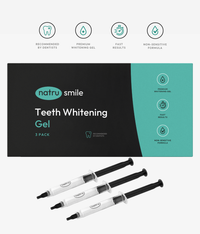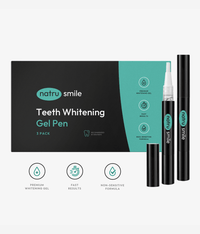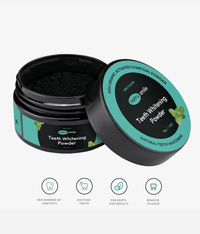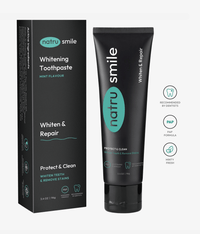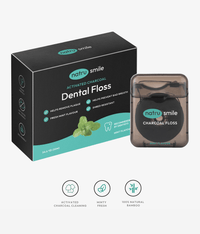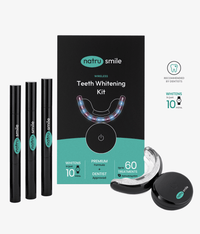
All products are certified by dental expert Dr. Greg Grillo
If you see any toothbrush advertisement, the best toothbrush is the one you can buy by clicking that ad. But here's the reality: there is no best toothbrush for everyone. Instead, you need to find the right toothbrush for you.
The right toothbrush is different for each person. Different people have different needs. They also have different budgets, sensitivity levels, and medical conditions. Knowing this, your favorite toothbrush might be a nightmare for someone else.
So, if you are unsatisfied with your toothbrush, this article is for you. Using the tips presented here, you can find everything you need to know about finding the right toothbrush.
The Basics - Knowing The Different Types Of Toothbrushes
Before you start shopping for a toothbrush, it helps to know your options. Generally, you'll find them falling into two categories: manual and electric.
Manual Toothbrushes
Manual toothbrushes are your standard, everyday toothbrush. You use them for a bit, throw them away, and get another toothbrush when ready.
They are often made using inexpensive plastic. So, get a manual toothbrush if you don't want to spend a lot.
Electric Toothbrushes
Electric toothbrushes hold motors that rotate your brushes for you. This can help you improve your smile without putting much effort into teeth brushing.
If you have arthritis or another condition, electric toothbrushes are easy on your hands. However, they tend to be more expensive than their manual counterparts.
If you don't have these needs, you might not think this brush is helpful. But that doesn't mean you should write them off.
A study found that electric toothbrushes effectively removed plaque and controlled gingivitis when compared to manual brushes. So, while human hands can try to mimic the perfect stroke of a powered toothbrush, they might struggle to reach it.
Sonic toothbrushes, seen as the advanced form of electric ones, take this a step further. They vibrate at a higher frequency, which claims to clean better.
Choosing A Toothbrush: Where to Look
There's more to choosing a toothbrush than how it runs. There are a series of other concerns to address when choosing a toothbrush.
Below, you'll find out more about those concerns:
Soft Vs. Hard Bristles
In a battle of soft vs. hard toothbrushes, soft-bristle toothbrushes are a safer alternative to hard-bristle brushes. This is because they tend to be more comfortable and less harmful to your teeth.
Hard-bristle toothbrushes are more likely to damage dentin (the bulk of your teeth under your enamel). Given dentin makes up most of your tooth, this is a dangerous prospect.
Hard- and medium-bristle toothbrushes have one advantage: they effectively remove plaque. But they also remove everything else more effectively, so it's usually better to stick with safer routes.
Size And Shape Of The Toothbrush Head
The size and shape debate of toothbrushes has many differing opinions. Given these opinions, it's best to go with what feels right.
Adult-sized toothbrushes tend to be one inch tall and half an inch wide. This works for most people, but it might not work if you have a big or small mouth. Trying the standard size and going up or down will give you a good idea of what works for you.
Toothbrush shapes come in one of two forms: boxy and rounded. Rounded (or diamond-shaped) heads are generally preferred because of their narrow tip.
This helps your brush reach narrow areas that a rectangular brush cannot reach.
Rectangular brushes cover a wider area with less detail. The boxy shape has been around longer, so some consider it obsolete.
Of course, the shape of your toothbrush's head goes beyond two simple variants.
Shape And Size Of Bristles
Toothbrush heads come in a considerable number of varieties. Thankfully, The Journal of Dental Hygiene created a catalog of toothbrush head designs to help us understand what works.
The catalog tells us that most toothbrush bristles are identical in form and function. The diameters of these bristles remain the same across both electric and manual toothbrushes.
The collection of heads affirms one thing: the importance of round-end bristles. These rounded bristles cause less damage to mouth tissue when brushing. So, if you can, look for toothbrushes with end-rounded bristles.
Handle Grip
Different handles might not sound very important, but they can be beneficial. Generally, they come in one of three forms, with pros and cons for each:
- Straight handles are the most common and are the least expensive. They still have some limited grips to make them easier to hold.
- Bent handles help people reach around corners in the mouth. These handles if you have difficulty contacting your back molars.
- Ridged handles are helpful for people who live with limited mobility. If you, or a friend you know, has difficulty gripping a toothbrush, consider a ridged handle.
When picking a toothbrush for yourself, choose something that feels good in your hands. Consider these handle alternatives if you want to try something to help you get a better grip.
ADA Seal Of Acceptance
The ADA, or American Dental Association, provides a seal of acceptance to products with proven effectiveness. Typically, this "effectiveness" means that the toothbrush is safe to use.
The safety tests address these concerns:
- Safe materials are used in making the brush
- There are no jagged edges in the bristles, and they won't fall out with regular use
- The handle is durable enough for everyday use
- It can be used to reduce plaque and gum disease without the need for adult supervision (used by a child)
An ADA seal of acceptance means it works and won't break in the middle of use. This makes it more of a proof of usability, not a testament to extreme effectiveness.
Style Preferences In Your Toothbrush
Another aspect of choosing a good toothbrush is the style. Whether it be your favorite color or a specific design, there's no reason you can't be excited about the style your cleaning tools bring to the bathroom.
There are no style rules you must abide by, just pick a toothbrush you love to look at. You can make it exciting so you're looking forward to brushing your teeth twice daily.
Is It Better To Use An Electric Or A Manual Toothbrush?
From the data, electric toothbrushes can be more effective at removing plaque and cleaning your teeth than manual toothbrushes. This comes from the smooth motions it uses to clean your teeth naturally.
You'll also find using an electric toothbrush with braces pretty effective. It helps remove trapped food with greater ease, which can be a chore if you have braces.
But a manual toothbrush can be as good using the proper technique. So try not to brush too hard and use small, circular motions when cleaning. It's more about what you do with the toothbrush than the amount you spend.
Which Toothbrush Is Recommended By Dentists?
The ADA recommends toothbrushes with soft bristles that receive their seal of approval. You can use the ADA website to search for a list of approved toothbrushes by their board of dentists.
The ADA follows many of the same tips mentioned earlier in this article. So, if you follow those tips, you can find a great brush.
Should I Get A Hard Or Soft Toothbrush?
A soft toothbrush is preferred over a hard toothbrush because it's less likely to damage your teeth. Stiff brushes can be tough on enamel, eventually eating away the bone underneath.
You can ask your dentist about the best toothbrush. They'll know the details of your mouth and have personal experience picking out the best brush.
Is There Really A Difference Between Toothbrushes?
Each toothbrush might have similar qualities but include minute differences that can help or hinder you. There are pros and cons to each kind of toothbrush worth noting.
If you use electric toothbrushes with soft bristles, you'll find them very effective compared to inexpensive varieties. Although they tend to cost more, they can help you if you want to work towards at-home teeth whitening.
Manual toothbrushes, also with soft bristles, can be just as good. While some people might swear by expensive toothbrushes, there is often more value in how you brush. Try not to worry too much about getting the most expensive brush.
Why Choosing The Right Toothbrush Is Important?
Finding the right toothbrush is important because it helps make brushing teeth easier. If you find the brush difficult, you won't be enthused about brushing your teeth.
When considering the basics, it's ultimately more important to pick a brush that feels right. Whether a powered toothbrush or a manual one, the perfect toothbrush should be uniquely yours.
What Is the Healthiest Toothbrush To Use?
The healthiest toothbrush to use is one that meets the ADA's recommendations. This means picking one with soft bristles that won't damage your teeth.
Switching your toothbrush every three months ensures it remains healthy. A clean toothbrush leads to a clean mouth.
Are Expensive Toothbrushes Worth It?
You don't have to spend much money to get an excellent toothbrush. Some of the most inexpensive dental cleaning tools can effectively remove plaque and clean teeth.
Expensive toothbrushes can be great as well. For example, sonic toothbrushes effectively remove plaque and control gum disease, according to studies cited earlier in this text.
What Is The #1 Recommended Toothpaste?
The number one recommended toothpaste is fluoride toothpaste. Fluoride is a proven cleaning agent that can help strengthen enamel.
You can find many fluoride toothpaste brands at your local store. These kinds of toothpaste have bold claims and high prices. But ultimately, they tend to use very similar ingredients.
Much like the number one brush, the number one toothpaste is also different for everyone.
You'll need to pick a sensitive toothpaste if you have sensitive teeth. These cleaning products are formulated not to irritate your teeth, keeping your mouth healthy.
You might benefit from whitening toothpaste if your goal is to get whiter teeth.
Using whitening toothpaste alongside natural teeth whitening, teeth whitening kits, or in-office whitening can help you get whiter teeth in a matter of weeks.
How Long Should A Toothbrush Last?
A toothbrush should last at least three months, regardless of whether it's powered or manual. You'll want to replace your brushes regularly to ensure the surface isn't collecting bacteria.
A clean electric toothbrush can be just as effective as a clean manual one. Both follow similar schedules for replacement, although you usually only need to replace the heads of electric varieties.
Are Three-Sided Toothbrushes Good?
Despite the unusual design, three-sided toothbrushes have some proven effectiveness. In one study, it was found to remove more biofilm (bacteria) from the surface of teeth during professional dental cleanings.
Three-sided brushes have the added benefit of cleaning all sides of your teeth at once. This can save you some time and effort in cleaning your teeth.
You might not see these brushes on a list of the best because of their size and cost.
These toothbrushes have three heads, which makes them harder to fit in some mouths. They are also a bit unwieldy to use, given their enormous size.
Compared to some toothbrushes you can get at the store, three-headed brushes also tend to cost much more. The price becomes much higher when you add a powered element.
Are U-Shaped Toothbrushes Good?
U-shaped toothbrushes, similar to the three-sided toothbrush, might sound even more efficient and effective. But Some studies found these ineffective for removing plaque. So if you want a unique brush, choose an electric one or a three-sided one.
These brushes clean all of your teeth at once. This creates a single motion to clean your teeth, reducing the amount of time you need to spend during cleaning.
But because they cover a wide area, you can't guarantee you'll get all your teeth. Much like the obsolete design of box-shaped brushes, you sacrifice detail to save time.
Wrapping Up
There are some clear distinctions on what makes a toothbrush good. Across the board, the ADA agrees that the most critical aspect is a soft-bristled toothbrush.
You can see increased effectiveness from using electric and sonic toothbrushes. But, you'll have to pay high upfront costs and spend more later when replacing the heads.
Unique toothbrushes, like u-shaped ones, might not be as effective. Meanwhile, three-headed toothbrushes have shown some effectiveness in studies. But both are trying to save time, which might not clean all of your teeth.
If you want to know how to choose the best toothbrush, follow the basics and choose based on your preferences. Keeping this in mind, you'll have no problem brushing, regardless of how much you spend.


